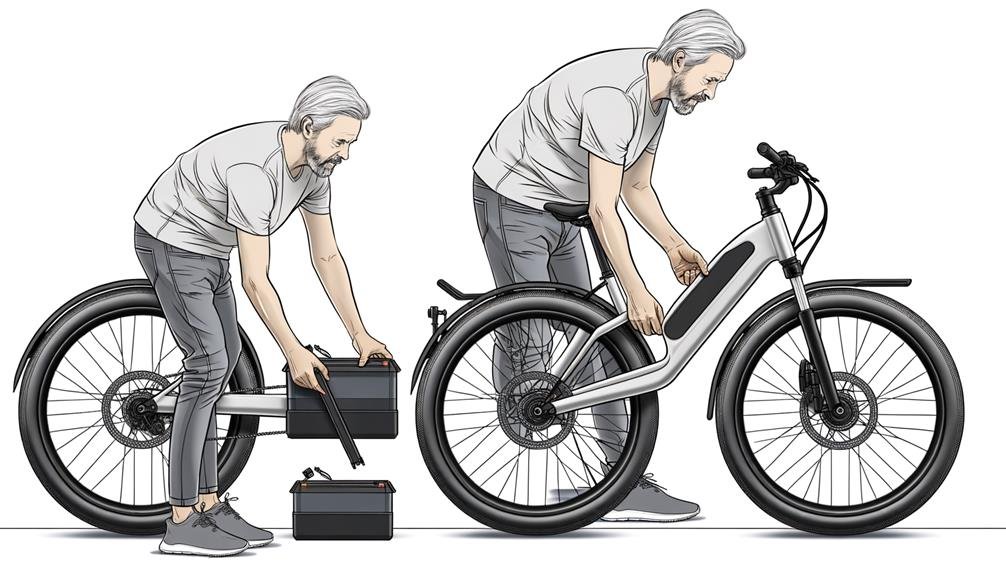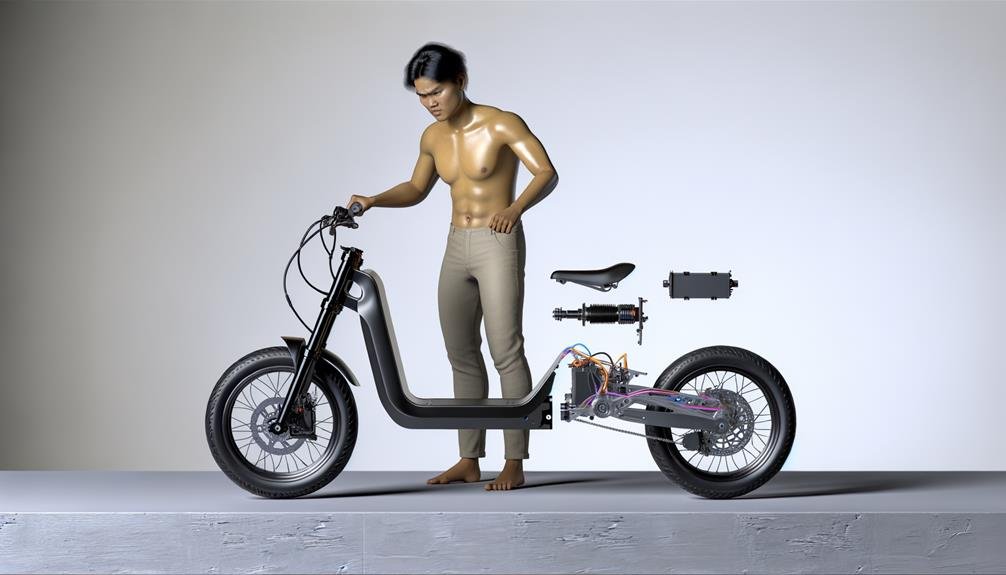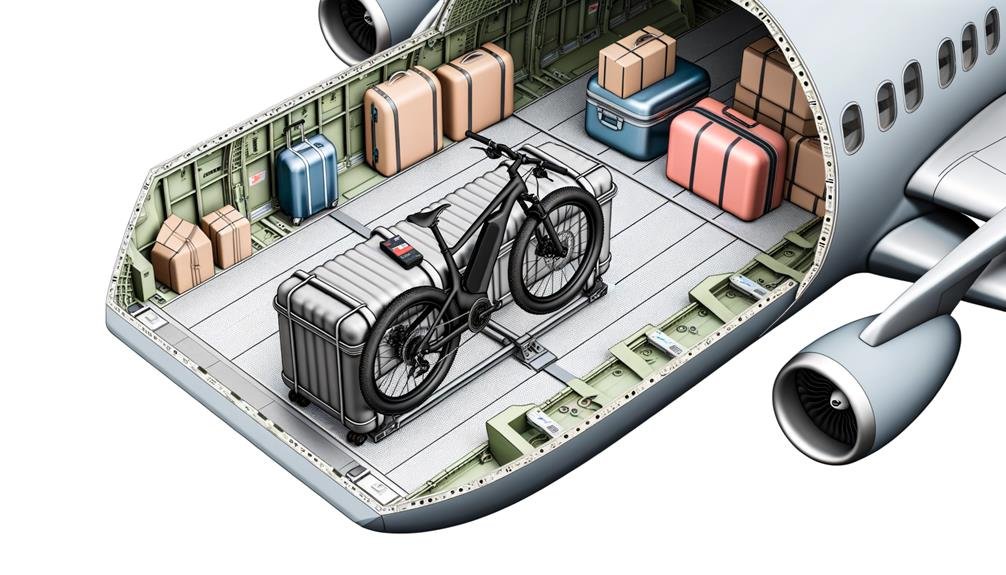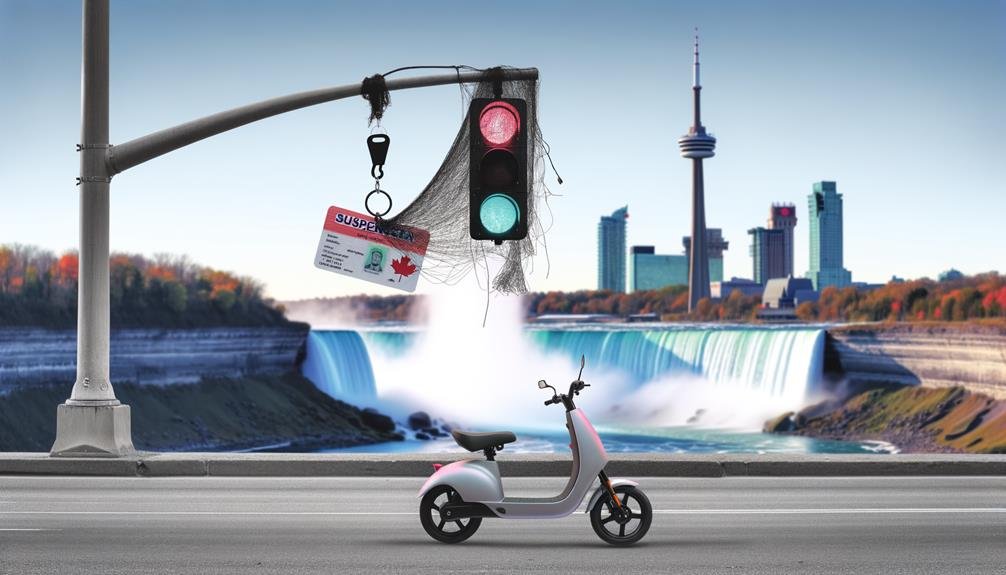Charles Miller is a veteran bike enthusiast with over 12 years of experience dealing with bikes as a mechanic. Despite immense love and expertise for...
Biking enthusiasts, we're beginning to embrace electric bikes more and more, but there's a burning question that's bugging a bunch of us – how do we carry these heavier, bulkier bikes?
Let's not beat around the bush; it's a challenge. Not only do e-bikes weigh more than traditional bicycles, but they also come with delicate components that need careful handling. Yet, as complicated as it might seem, it's not an impossible task.
Stick with us as we explore various methods and practical tips that will help us transport these e-bikes without breaking our backs or budgets.
Want to know more? Well, you'll just have to stay tuned.
- Key Takeaways
- Understanding Electric Bike Components
- Assessing Your E-bike's Weight
- Preparing Your E-bike for Transportation
- Using a Car Trunk for Transport
- Utilizing Roof Racks Effectively
- Advantages of Luggage Racks
- Tips for Lightening Your E-bike
- Transporting E-bike via Public Transport
- Flying With Your Electric Bike
- Frequently Asked Questions
- Conclusion
Key Takeaways
- Understanding the components and weight of an electric bike is important for determining transportation methods and stability.
- When preparing an e-bike for transportation, securely stow it inside a car or on a bike carrier and consider removing the battery and front wheel for easier lifting and loading.
- Different transportation options like car trunks, roof racks, and luggage racks offer various benefits and considerations for carrying an e-bike.
- Transporting an e-bike via public transport or flying requires planning, checking regulations, and considering options like foldable e-bikes or renting at the destination. Proper packing and securing of the e-bike is also crucial.
Understanding Electric Bike Components
Let's dive into the key components of an electric bike, starting with the battery, which powers everything from the electric motor to other electronic features. This fundamental powerhouse is vital in providing propulsion, especially for electric mountain bikes tackling various terrains. It's not just about the ride; the battery also fuels other electronic features, making our e-bikes more sophisticated and user-friendly.
Next, we've the electric motor, our e-bike's workhorse. It supplements our pedaling efforts, making those uphill climbs a breeze and guaranteeing smoother rides overall. This power-assist feature is what sets electric bikes apart from traditional ones, transforming our cycling experience into something more effortless and enjoyable.
The controller is another crucial component, managing the flow of electricity from the battery to the motor. It's like our e-bike's brain, dictating the speed and power output based on our needs and preferences.
We also have the display panel, our informative companion that shows us essential details such as speed, battery level, and assist levels.
Assessing Your E-bike's Weight
Diving into the weight aspect of electric bikes, we find that they're generally heavier than traditional bikes, with their weight fluctuating between 8.5kg to nearly 40kg, largely due to the embedded battery and electronic components. This factor significantly impacts how you'll go about transporting your e-bike.
Assessing your e-bike's weight is crucial in determining the most apt transportation method. The additional weight gives the e-bike a different centre of gravity, affecting its stability during transportation. A lighter e-bike, for instance, could be carried inside a vehicle or on a basic rack. Heavier models, however, may necessitate alternative transportation solutions to ensure secure and safe transport.
It's worth noting that the heavier weight of e-bikes may require us to take additional precautions during transportation. This includes securing the bike more firmly and possibly investing in more robust carrying equipment. We're part of a community that values safety and efficiency, so understanding the nuances of our electric bike's weight is a key aspect that shouldn't be overlooked.
Together, we can ensure our e-bikes are transported safely and conveniently.
Preparing Your E-bike for Transportation

Before we start transporting our e-bike, it's crucial to properly prepare it to ensure both the bike's safety and ours. This involves steps like stowing the e-bike securely inside the car or using a bike carrier, and even considering the removal of the battery and front wheel for easier lifting and loading.
Here's a step-by-step guide on preparing your e-bike for transportation:
- Stow the e-bike securely: Whether you're using the car's interior or a bike carrier, make sure the electric bike is firmly fastened to prevent any movement during transport.
- Remove the battery and front wheel: This step not only makes lifting and loading easier but also helps protect your e-bike's components.
- Use protection: A blanket or a dedicated bike auto rack would keep the vehicle clean. Again, secure the bike to prevent any movement during transport.
- Consider the bike frame: When choosing a hitch-mounted bike rack, check if it's rated for the e-bike's weight and compatible with its wheel sizes, frame, and tire width.
Using a Car Trunk for Transport
Often, we find ourselves needing to transport our e-bike using the car trunk, which requires careful planning to ensure safe and secure transit. Transporting E-Bikes in this way isn't as daunting as it sounds, provided we take the necessary precautions.
Firstly, we have to ensure that the e-bike fits within the dimensions of the car trunk. If the e-bike is too large, we can consider removing the front wheel or battery to make it easier to accommodate.
To protect both the bike and the car trunk, it's advisable to use an old blanket or any protective cover. This not only prevents damage to the car trunk but also keeps the bike in place, minimizing movement during the journey.
Furthermore, using tie-down straps or bungee cords can further secure the bike in place. However, we must also consider the weight capacity of the car trunk to prevent any potential damage.
To summarize, here's a quick guide:
| Steps | Recommendations |
|---|---|
| Fit E-Bike | Check dimensions, remove parts if needed |
| Protective Cover | Use old blanket or cover |
| Secure Bike | Use tie-down straps or bungee cords |
| Check Weight Capacity | Ensure trunk can carry e-bike's weight |
| Monitor | Check regularly during transit |
Utilizing Roof Racks Effectively

We're now moving onto the effective utilization of roof racks for carrying electric bikes.
Our focus will be on roof rack selection, ensuring it's compatible with your e-bike's specifications, and safe loading techniques.
We'll tackle how to securely fasten your e-bike to prevent movement during transit and discuss the importance of checking height clearance to avoid potential accidents.
Roof Rack Selection
When selecting a roof rack for your electric bike, it's crucial to consider its weight capacity to ensure it can support the e-bike's weight effectively.
To make your selection process easier, we've compiled some tips for transporting your e-bike using roof racks:
- Ensure the roof rack's weight capacity can carry your e-bike. This is key to having your bike on top safely.
- Choose a roof rack that fits perfectly with your e-bike's size and dimensions.
- Look for roof racks with locking features for extra security.
- Consider the aerodynamics of the roof rack. A good one will minimize wind resistance, reducing noise while driving.
Safe Loading Techniques
Having selected the perfect roof rack for your e-bike, let's now focus on safe loading techniques to effectively utilize this transportation method. It's crucial to ensure that the rack's weight capacity is suitable for your e-bike. Use secure, padded mounts to prevent scratches and ensure a stable fit.
| Steps | Task | Importance |
|---|---|---|
| 1 | Check rack's weight capacity | Ensures eBike is a great fit |
| 2 | Use secure, padded mounts | Protects eBike from scratches |
| 3 | Check tightness of locks | Secures bike firmly |
| 4 | Position bike carefully | Ensures stable transport |
| 5 | Regularly inspect rack | Maintains safe transportation |
Lastly, position your e-bike carefully on the rack, ensuring it's evenly balanced and the handlebars are aligned with the rear of your vehicle. Regularly inspect your roof rack for signs of wear or damage. These are the essentials of how to carry an electric bike safely.
Advantages of Luggage Racks
In discussing the advantages of luggage racks, we'll highlight their portability and capacity enhancements.
We'll explore how these racks offer a practical solution for transporting various types of e-bikes, keeping them secure and preventing damage.
Furthermore, we'll address the added bonus of interior space freed up in your vehicle, making your journeys more comfortable.
Benefits of Rack Portability
While carrying an electric bike might seem challenging, luggage racks offer a versatile, convenient, and efficient solution, especially when transporting e-bikes over long distances or in large quantities. These racks, whether they're car mounted bike rack or standalone units, provide significant benefits of rack portability.
Efficiency: Racks enable easy loading and unloading of e-bikes, saving us time and effort.
Protection: They shield our e-bikes from potential damage that might occur if we place them inside the car.
Flexibility: They're compatible with various vehicle types, providing us with a range of transportation options.
Space-saving: Using a rack frees up space inside our car, allowing us to transport additional items alongside our e-bikes.
The portability of these racks truly enhances our e-bike transportation experience.
Enhancing Bike's Carrying Capacity
Luggage racks, the unsung heroes of e-bike accessories, remarkably enhance the bike's carrying capacity, transforming it into a more versatile and practical mode of transport. These racks can accommodate 43% more items, including panniers and baskets, offering convenient storage options.
They add utility to our bikes without compromising maneuverability or adding significant weight. This means we can carry groceries, work essentials, or recreational items easily. The addition of luggage racks doesn't hinder the e-bike's performance, instead, it contributes to a more comfortable and well-organized ride.
Tips for Lightening Your E-bike

To lighten your e-bike for easier transport, you can start by removing the battery and the front wheel. This initial step can significantly decrease the weight, making the electric bike more manageable to lift and load.
Here are some more tips for lightening your e-bike:
- Use a Bike Rack: Utilizing a bike auto rack can prevent your e-bike from accumulating dirt and debris during transport. This tip will keep your car clean while making the transport process smoother.
- Dismantle Components: Unmounting the wheels, pedals, and optionally the handlebar can further lighten your electric bike. It also makes it easier to fit the bike inside the car.
- Use a Tow Bar Mounted Rack: These racks can carry up to two e-bikes and feature a ramp and tilting motion. It's a preferred method for most cars due to its convenience.
- Consider a Roof Rack: A roof rack provides excellent stability, though heavy lifting might be needed. Use caution to avoid injury or potential damage.
We hope these tips help you understand how to carry an electric bike more efficiently. Remember, the goal is to make the transportation process as easy as possible while preserving the condition of your e-bike.
Transporting E-bike via Public Transport
Navigating the hustle and bustle of public transport with an e-bike requires careful planning and adherence to specific regulations. As we explore new places, we often wonder how to carry an electric bike on public transport easily and efficiently. It's crucial to research these regulations, as they vary widely from city to city and between different types of public transport.
Consider a foldable e-bike, which is more compact and easier to maneuver on a crowded bus or train. If possible, removing the battery can make transporting an e-bike via public transport even easier, as this reduces the weight.
Check out the following table that outlines key considerations:
| Transportation Mode | E-Bike Regulation | Tips for Transporting |
|---|---|---|
| Bus | Check with local transport authority | Remove the battery, fold the bike if possible |
| Train | Varies by rail company | Secure with straps or bungees |
| Local U-Haul | Usually allowed | Ensure bike is secure and well-protected |
When venturing into crowded conditions, using straps or bungee cords to secure the e-bike is vital. This not only protects the bike but also ensures the safety of fellow passengers. With careful planning, you can enjoy the freedom of exploring new places with your e-bike, even on public transport.
Flying With Your Electric Bike

While mastering the art of maneuvering your e-bike on buses and trains is crucial, it's equally important to understand the ins and outs of bringing your electric bike onto an airplane. Flying with your electric bike can seem daunting, but there's no need to worry. Your e-bike is a great companion, and we're here to guide you on how to carry an electric bike on your flight.
- Check with the airline: Regulations vary, so it's essential to check specific requirements with your airline beforehand.
- Consider renting: If the process seems too complicated or costly, consider renting an e-bike at your destination.
- Pack properly: If you choose to fly with your e-bike, ensure it's properly packed and secured to minimize potential damage.
- Consider costs and risks: Be aware of the potential risks and costs involved. This includes additional fees and the potential for damage during transit.
Frequently Asked Questions
What Is the Best Way to Carry an Ebike?
We've found considering the e-bike's weight, removing the battery, using protective gear, and having necessary travel accessories can ensure a safe and efficient transport. Let's explore these steps to make your e-bike's journey smooth.
How Do I Transport My Electric Bike?
We'd first dismantle our e-bike, using careful lifting techniques. The parts are then securely fastened in the e-bike packaging. Finally, we'd check for vehicle compatibility to ensure safe transportation of our reassembled e-bike.
Do You Need a Special Bike Rack for Electric Bikes?
We don't necessarily need a special rack for electric bikes. However, we must consider rack suitability, hitch considerations, and the rack's weight capacity to ensure the e-bike's compatibility and safe transportation.
How Do You Travel With an Electric Bike?
We've explored various eBike shipping options and travel-friendly designs. Despite eBike travel restrictions, portable designs make the journey easier. We're all in this together, navigating the complexities of eBike transportation.
Conclusion
In the end, transporting our e-bike can seem daunting, but with proper knowledge and preparation, it's a breeze. We can protect our precious cargo by understanding its weight, removing unnecessary components, and using suitable transportation options.
It's our journey, our adventure. The wind in our hair, the thrill in our hearts – the open road awaits. Let's embrace the freedom our e-bikes offer, and carry them with the care they deserve.

Charles Miller is a veteran bike enthusiast with over 12 years of experience dealing with bikes as a mechanic. Despite immense love and expertise for his Tacoma, he rides his Trek Ebike more. Anytime you meet him, you’ll either hear him talking about Bikes, or writing about all things bikes and cars on this blog.
More Posts


